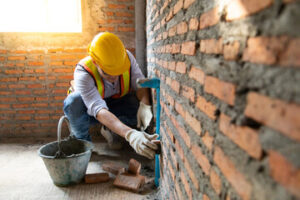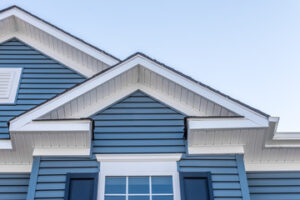Charleston Masonry Masters is a building material that includes brick, stone, and concrete. Its strength and fire resistance make it an important component in construction.

Masonry structures need specialized construction skills. This can increase project costs and lead to longer construction times. This is because the materials need to be stacked and mortared individually.
Masonry has long been valued for its aesthetic qualities, color, texture, pattern and scale. Its visual impact can be enhanced with a variety of artistic and innovative techniques. Masonry is particularly effective in establishing an architectural style, and its modular construction methods offer the flexibility to support a wide range of design options.
The inherent density of masonry materials like brick and stone provides significant thermal mass, which helps to regulate interior temperatures and reduce the need for artificial heating or cooling. This contributes to energy efficiency and sustainable construction practices, as well as providing a healthier living environment.
As building technologies progress, masonry has remained a popular choice for contemporary architecture, demonstrating its adaptability to new styles and uses. Masonry can be used in modern wall systems as a lightweight alternative to conventional wood framing, and can be combined with other lightweight materials such as steel, glass and concrete. This technique, known as composite masonry, can provide both structural integrity and aesthetic enhancements.
During the medieval period, brick and stone masonry reached new heights of beauty and intricacy in the construction of European cathedrals and castles. This was a result of the use of a unique mortar composition that allowed for greater design creativity and masonry’s ability to transform a structure’s overall form.
Concrete masonry is also highly adaptable for aesthetics, with a variety of finishes and textures available. Inventive bond patterns, color choices (unit and mortar), unit size and surface finish can be combined to evoke a sense of strength, modernity or tradition in any architectural style. Rubble masonry, a less formal and more natural style of masonry construction, can enhance its aesthetic by using varying colors and types of stones and allowing for some irregularity in the appearance of individual bricks.
The masonry restoration industry has evolved with the advent of new materials, such as geopolymer mortars and bio-based consolidants. These products provide an environmentally friendly option for historic masonry repairs, and can outperform traditional repointing solutions with respect to durability and compatibility with existing substrates. These advancements, along with the continued efforts of masonry restoration professionals, can ensure that historical structures are repaired using sustainable materials that will preserve their value for generations to come.
Durability
Masonry is a time-tested construction material that offers strength, durability, and timeless aesthetics. Its longevity reduces construction and maintenance costs, making it a cost-effective choice for residential and commercial projects. Digital fabrication technologies also offer new possibilities to enhance the performance of masonry while reducing environmental impact.
Masonry is made up of bricks, stones, concrete blocks, and other units that are stacked and bonded together with mortar. It can be used for both structural and decorative purposes, with each type offering unique advantages. Brick masonry, for example, provides excellent load-bearing capacity and can last over 100 years with minimal maintenance. Stone masonry, on the other hand, is more expensive but offers a rugged, natural look and superior durability.
In addition to its durability, masonry is also fire-resistant and offers sound insulation. It also resists moisture and other damaging environmental factors, such as frost and ice. Its strong, durable walls can also withstand natural disasters like earthquakes and hurricanes.
Choosing the right materials for your masonry project is crucial to its success. It’s essential to use quality materials to ensure safety, durability, and longevity. It’s also important to adhere to industry standards for safety and performance. For instance, proper installation of moisture barriers prevents masonry from suffering water damage over time.
While masonry offers numerous benefits, it is important to understand its limitations. For example, unreinforced masonry, such as bricks and pre-1900s concrete, can have low tensile strength and be brittle. However, modern engineering and construction practices can improve its seismic performance.
Additionally, masonry can be heavy and difficult to work with. It requires specialized tools to handle, and it’s important to wear appropriate gear for safety. For example, masons should wear gloves and eye protection to protect themselves from flying debris, as well as take breaks and use ergonomic tools to avoid repetitive strain injuries. It’s also a good idea to wear a dust mask when working with mortar, as it can irritate the nose, eyes, and throat. In addition, it’s important to follow proper lifting techniques and keep bystanders at a safe distance from construction sites.
Energy Efficiency
Masonry’s natural insulative qualities help regulate indoor temperatures, keeping spaces warm in winter and cool in summer. This can result in significant energy savings and lower environmental impact compared to homes built with wood-frame construction.
Incorporating brick and concrete into your home’s architecture can also contribute to the structure’s energy efficiency. This material’s thermal mass properties allow it to absorb and hold heat throughout the day, releasing it at night, lowering overall heating and cooling loads.
These properties also work in tandem with a high level of insulation to create a well-rounded, energy-efficient building envelope. In fact, when paired with other materials like foam or air barriers, masonry can increase a building’s R-Value to comply with current energy efficiency requirements.
A variety of innovative building materials and technologies are increasing the capabilities of masonry, expanding its applications to new and exciting projects. Self-healing concrete, regenerative thermal systems, and digital fabrication techniques are all enhancing durability and efficiency, while helping reduce carbon footprints and waste.
With these advances, architects and builders are able to push the limits of masonry, creating structures that are more beautiful, durable, and sustainable than ever before. Incorporating these cutting-edge technologies is key to ensuring that masonry continues to be at the forefront of construction technology, while maintaining its timeless beauty and elegance.
Masonry’s low maintenance requirements are also beneficial for its environmental impact. For example, bricks are made from natural materials that don’t require chemical coatings or preservatives to maintain their lifespan. These materials can even be recycled, reducing the need for raw and fossil fuels in production. Additionally, bricks can be sourced locally or regionally, further minimizing their ecological impacts.
Regular inspections and preventative maintenance can also preserve the energy-efficient benefits of a masonry structure. This maintenance can include cleaning, repointing (replacing the mortar between individual bricks), and repairing cracks or damage to insulation. In addition, using a vapor-permeable sealant on brick or stone exteriors can protect the masonry from moisture and condensation while allowing trapped vapor to escape. This can help avoid costly structural repairs and moisture damage that would deteriorate the integrity of the insulating material.
Maintenance
Masonry structures add beauty and value to buildings, but like any building material, they must be maintained and protected from damage over time. This maintenance must include inspections and periodic restorative cleaning of masonry surfaces. It is also critical to prevent water penetration which can cause structural damage, increased energy costs and even personal injury. Fortunately, regular inspections and proper cleaning can help preserve the masonry of historic buildings, keeping them a symbol of strength and durability for centuries to come.
The most common problem faced by masonry is the infiltration of water, which can weaken masonry materials and lead to structural failure. The best way to prevent water penetration is to install control joints in masonry walls. This can be done by saw-cutting a vertical joint through the mortar and masonry units at a predetermined spacing. Then, the joint is filled and caulked.
Another common problem encountered by historic masonry is cracking. While hairline cracks in brick are typically cosmetic and don’t affect the integrity of the structure, wider cracking may indicate a more serious issue. In these cases, a professional design consultant should be engaged to evaluate the cause of the cracking and to recommend appropriate corrective actions.
It is essential to clean masonry on a regular basis, to remove dirt and biological growth such as moss or algae. It is important to use cleaners designed for masonry surfaces and to avoid pressure washing, which can damage the brick and mortar. For most brick, a light scrubbing with a detergent or mild acid is all that is needed to keep the surface clean and prevent staining.
Other routine maintenance includes ensuring that there is adequate drainage around the foundation of a masonry structure to prevent water accumulation, which can damage the brick and mortar. It is also important to ensure that the gutters and downspouts are working properly to redirect rainwater away from masonry walls. In addition, it is a good idea to keep trees, shrubs and ivy away from the walls of a building, as their roots can penetrate mortar joints.
